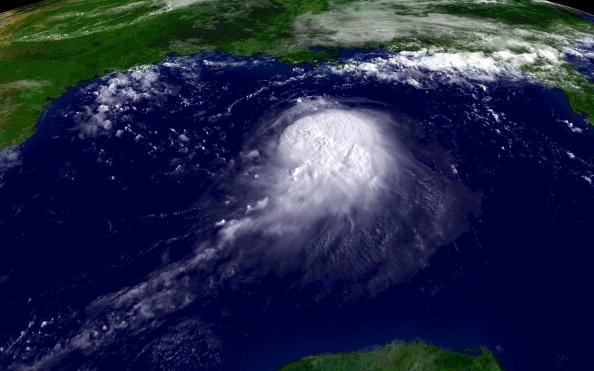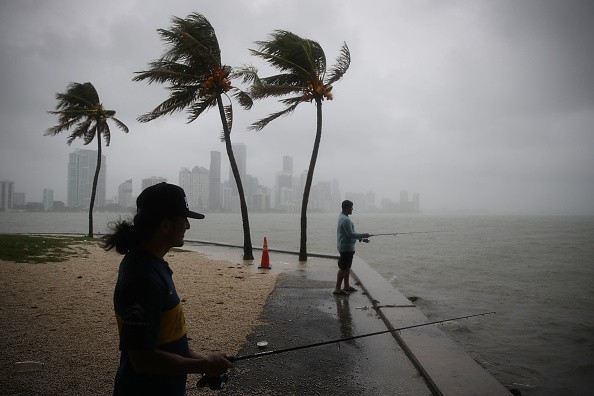On Tuesday, one day after changing from a subtropical storm to a tropical storm, Wanda continued to meander alone over areas of the open Atlantic.

Wanda Now a Tropical Storm
The storm that claimed the last name of the 2021 Atlantic hurricane season list became Tropical Storm Wanda on Monday evening after moving around the Atlantic as a subtropical storm.
The cyclone grew out of a winter storm that slammed the mid-Atlantic and New England at the beginning of last week and then drifted out across the open northern Atlantic.
After Victor developed over the far eastern section of the region on Sept. 29 and roamed the open seas until it dissipated on Oct. 4, the Atlantic has not had a recognized storm in its waters.
Wanda was 705 miles (1,135 kilometers) west of the Azores, a group of islands in the Atlantic that is a Portuguese autonomous area, as of early Wednesday morning. It had sustained winds of 50 miles per hour (85 kilometers per hour) and was traveling north-northeast at 8 miles per hour (13 kilometers per hour).
"Wanda has now fully made the transition from a subtropical storm to a tropical storm as it became detached from the upper-level trough of low pressure influencing the storm," AccuWeather Meteorologist Isaac Longley said. "The wind field of Wanda also became more concentrated around the core of the storm - another factor that supported Wanda's designation as a tropical storm."
Also Read: Meteorologists Warn Tropical Storm Victor May Intensify Into a Hurricane
Nicaragua, Costa Rica, Panama to Experience Rainfall
Wanda's wind direction power has stayed the same as when it was a subtropical storm, regardless of the fact that it is now a tropical cyclone, Longley noted. Wanda, on the other hand, "now has a smaller radius of maximum winds that wrap around the core of the storm."
Wanda is not predicted to make landfall, but shipping interests should brace themselves for intense seas on its path.
Another tropical disturbance was being followed by AccuWeather forecasts elsewhere in the Atlantic basin. On Tuesday night, this tropical storm crossed Central America and headed into the far eastern Pacific Ocean, where it may intensify.
Regardless of how it develops, this system is expected to produce heavy rain to parts of Nicaragua, Costa Rica, and Panama through Wednesday.

WMO's Supplemental Name List
Since this equatorial tide was unable to develop in the Atlantic basin, the next named storm would be the first to use the supplementary name list, which the World Meteorological Organization (WMO) instituted to replace the Greek alphabet.
This new initiative was generated when the National Hurricane Center (NHC) was forced to use the Greek Letter to name additional storms during the 2020 Atlantic hurricane season.
The World Meteorological Organization (WMO) has declared that the Greek alphabet will no longer be used because it creates a distraction from the delivery of danger and storm alerts and is also sometimes misleading.
Despite the fact that the naming protocol is just a minor portion of the Hurricane Committee's life-saving efforts, it receives the greatest media attention. Unless a storm is sufficiently destructive or expensive that its name is removed from subsequent lists, Atlantic tropical cyclone name lists recur every six years.
Since 1953, when the present system started naming storms, a total of 93 names have been withdrawn from the Atlantic basin list.
Due to the ongoing pandemic, the Hurricane Committee decided to retire names beginning in 2020, as well as 2019.
Related Article: Subtropical Storm Wanda Forms, Claiming Last Name of 2021 Atlantic Hurricane Season
For more news, updates about Wanda and similar topics don't forget to follow Nature World News!
© 2024 NatureWorldNews.com All rights reserved. Do not reproduce without permission.

![Climate Change is Reducing Dust Levels Worldwide as Arctic Temperature Warms [Study]](https://1471793142.rsc.cdn77.org/data/thumbs/full/70320/280/157/50/40/climate-change-is-reducing-dust-levels-worldwide-as-arctic-temperature-warms-study.jpg)


![Tsunami Hazard Zones: New US Map Shows Places at Risk of Flooding and Tsunamis Amid Rising Sea Levels [NOAA]](https://1471793142.rsc.cdn77.org/data/thumbs/full/70325/280/157/50/40/tsunami-hazard-zones-new-us-map-shows-places-at-risk-of-flooding-and-tsunamis-amid-rising-sea-levels-noaa.jpg)
